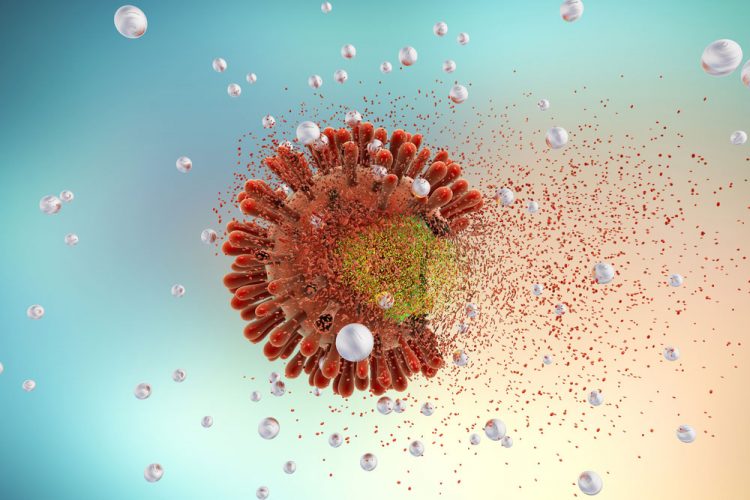Biktarvy approved for the treatment of HIV-1 infection
Posted: 12 February 2018 | Dr Zara Kassam (European Pharmaceutical Review) | No comments yet
The FDA has approved Biktarvy a once-daily single-tablet regimen for the treatment of HIV-1 infection…


Gilead Sciences, Inc. has announced that the US Food and Drug Administration (FDA) has approved Biktarvy (bictegravir 50mg,emtricitabine 200mg/tenofovir alafenamide 25mg; BIC/FTC/TAF), a once-daily single-tablet regimen (STR) for the treatment of HIV-1 infection.
BIC/FTC/TAF combines the novel, unboosted integrase strand transfer inhibitor (INSTI) bictegravir, with the demonstrated safety and efficacy profile of the Descovy (emtricitabine 200 mg/tenofovir alafenamide, 25 mg;FTC/TAF) dual nucleoside reverse transcriptase inhibitor (NRTI) backbone, and is the smallest INSTI-based triple-therapy STR available.
This regimen is not yet licensed for use in Europe by the European Medicines Agency.
BIC/FTC/TAF is indicated as a complete regimen for the treatment of HIV-1 infection in adults who have no antiretroviral treatment history or to replace the current antiretroviral regimen in those who are virologically suppressed (HIV-1 RNA <50 c/mL) on a stable antiretroviral regimen for at least three months with no history of treatment failure and no known substitutions associated with resistance to the individual components of BIC/FTC/TAF. No dosage adjustment of BIC/FTC/TAF is required in patients with estimated creatinine clearance greater than or equal to 30 mL per minute.
BIC/FTC/TAF does not require testing for HLA-B 5701, has no food intake requirements, and has no baseline viral load or CD4 count restrictions. According to BIC/FTC/TAF’s Prescribing Information, prior to or when initiating treatment with BIC/FTC/TAF, healthcare providers should test for hepatitis B virus (HBV) infection and renal function, and monitor renal function as clinically appropriate during therapy.
“In clinical trials through 48 weeks, no patients taking the regimen of bictegravir plus FTC/TAF developed treatment-emergent resistance, results that were observed both in people new to therapy and those who were virologically suppressed and chose to switch regimens.” said Dr Paul Sax, Clinical Director of the Division of Infectious Diseases at Brigham and Women’s Hospital, Boston, Professor of Medicine at Harvard Medical School and a lead clinical trial investigator. “In addition, the clinical data show that the regimen’s antiviral efficacy, tolerability profile and limited drug interactions offer an effective new treatment option for a range of people living with HIV.”
The approval of BIC/FTC/TAF is supported by data from four ongoing Phase 3 studies: Studies 1489 and 1490 in treatment-naïve HIV-1 infected adults, and Studies 1844 and 1878 in virologically suppressed adults. The trials are comprised of a diverse population of 2,415 participants, including a wide range of adult age groups and races/ethnicities. BIC/FTC/TAF met its primary objective of non-inferiority at 48 weeks across all four studies. Through 48 weeks, no participants in any of the four studies failed BIC/FTC/TAF with treatment-emergent virologic resistance, no patients discontinued BIC/FTC/TAF due to renal adverse events and there were no cases of proximal renal tubulopathy or Fanconi syndrome. The most common adverse reactions in patients taking BIC/FTC/TAF were diarrhoea, nausea and headache.
In Study 1489, a total of 629 treatment-naïve adults with HIV were randomized 1:1 to receive BIC/FTC/TAF or abacavir/dolutegravir/lamivudine (600/50/300mg) (ABC/DTG/3TC). At Week 48, 92.4 percent (n=290/314) of patients taking BIC/FTC/TAF and 93.0 percent (n=293/315) of patients taking ABC/DTG/3TC achieved the primary endpoint of HIV-1 RNA <50 c/mL. In Study 1490, a total of 645 treatment-naïve adults with HIV were randomised 1:1 to receive BIC/FTC/TAF or DTG+FTC/TAF. At Week 48, 89.4 percent (n=286/320) of patients taking BIC/FTC/TAF and 92.9 percent (n=302/325) of patients taking DTG+FTC/TAF achieved the primary endpoint of HIV-1 RNA <50 c/mL.
In Study 1878, a total of 577 virologically suppressed (HIV-1 RNA <50 c/mL) adults with HIV taking regimens of a boosted protease inhibitor (bPI; atazanavir (300mg) or darunavir (800mg)) plus a dual-NRTI backbone (ABC/3TC or FTC/tenofovir disoproxil fumarate) were randomized 1:1 to continue their bPI regimen or to switch to open-label coformulated BIC/FTC/TAF once daily. At the primary endpoint of Week 48, switching to BIC/FTC/TAF was non-inferior to continuing on a bPI regimen with 1.7 percent of patients in each group having HIV-1 RNA ≥50 c/mL; the proportion of patients with HIV-1 RNA <50 c/mL was 92.1 percent in the BIC/FTC/TAF arm and 88.9 percent in the bPI arm, according to FDA snapshot algorithm.3 Results from Study 1844 will be presented at a scientific conference in 2018.
“Gilead is committed to improving care and simplifying therapy for people living with HIV. We continue to invest in research in next-generation treatments, including therapies that could potentially cure HIV patients,” said Dr John F. Milligan, Gilead’s President and Chief Executive Officer. “We are pleased to offer BIC/FTC/TAF, our latest triple-therapy treatment, which brings together the potency of an integrase inhibitor with the most-prescribed dual-NRTI backbone in a once-daily single-tablet regimen.”
Additional clinical trials of BIC/FTC/TAF are ongoing, including a dedicated study in women, as well as a study in adolescents and children living with HIV. Gilead plans to present data from these studies at scientific conferences in 2018.
In the European Union, Gilead’s Marketing Authorization Application for BIC/FTC/TAF was fully validated on July 13, 2017, and is now under evaluation by the European Medicines Agency. A decision is anticipated later this year. This regimen is not yet licensed in Europe.
BIC/FTC/TAF does not cure HIV infection or AIDS.
Related topics
Clinical Development, Clinical Trials, Regulation & Legislation
Related organisations
Brigham and Women’s Hospital, Gilead Sciences, Harvard Medical School, Inc., U.S. Food and Drug Administration (FDA)









